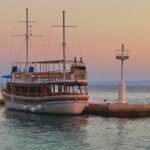So, you’re in Dubrovnik and you’d like to see not only more of Croatia but of its close non European Union neighbour, Bosnia and Herzegovina. Dubrovnik is the southernmost city in the Republic of Croatia and its ease of access to its neighbours is second to none. Taking the cable car up Mount Srdj gives you a view of Bosnia and Herzegovina’s rugged and mountainous interior. Bosnia and Herzegovina is the little spoken about, little heard about heart shaped country which is home to Europe’s last jungle. A mysterious, rocky land with a long, divided history and a landscape that looks as if God clawed it out with his own hands, who wouldn’t be drawn to one of the most beautiful, most overlooked and most underrated countries in Europe?
Croatia’s longest land border is with Bosnia and Herzegovina and there are border crossings in several places, with the closest to Dubrovnik being at Ivanica, a mere 20 minute drive from the Old City, followed by one at Neum – otherwise Bosnia and Herzegovina’s only piece of coastline – at just over an hour’s drive away. There are several independent agencies based in Dubrovnik which cater to those wanting to see Bosnia and Herzegovina, as well as across-border bus companies who have regular lines to popular cities like Mostar.
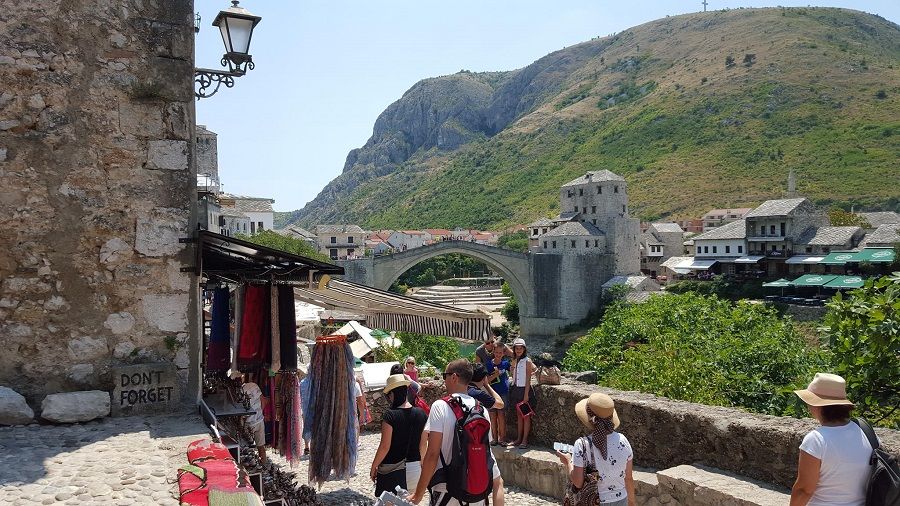
Let’s take a closer look at each way of getting from Dubrovnik to Bosnia and Herzegovina (and back again!)…
Independent Dubrovnik based tour companies
There are many in Dubrovnik and it is entirely at your discretion when it comes to picking which one suits you best. Most (if not all) of these tours are guided and last roughly 10-12 hours with travel there and back included, picking you up and dropping you back off at your accommodation. The most well known Dubrovnik based company in this respect is arguably Atlas Travel. Prices PP are generally low (around 300-400 hrk) and packages differ depending on the agency in question, with most doing a particular route and visiting particular destinations:
– The Kravica waterfall (Kravice), a stunning cascade on the Trebizat river in the karstic heartland of Herzegovina, close to Ljubuski and 40km from Mostar.
– Blagaj, a village-town in the south-eastern region of the Mostar basin in the Herzegovina-Neretva Canton, situated at the spring of the Buna river and boasting a historical tekija (Dervish monastery).
– Medjugorje in the municipality of Citluk, one of the most important sites for Catholic pilgrimages and the alleged site of an apparition of the Virgin Mary in 1981.
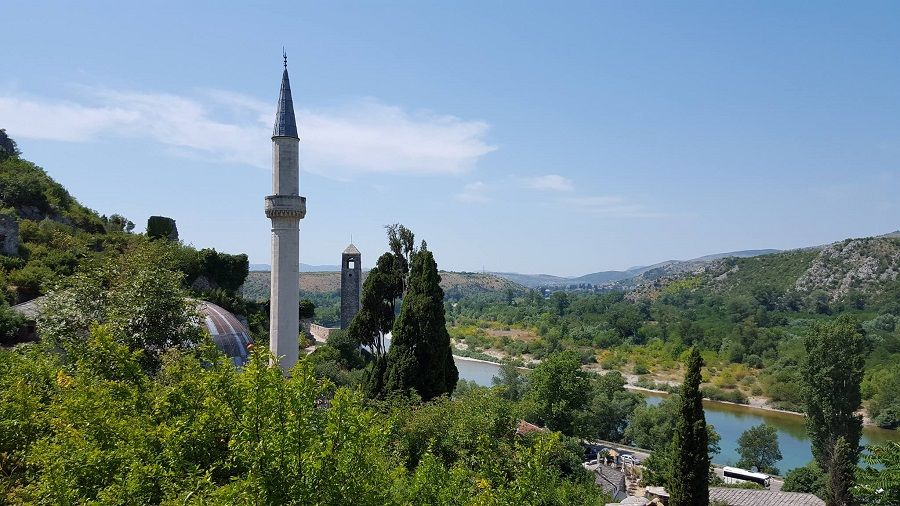
– The historic site of Pocitelj in the municipality of Capljina in the Herzegovina-Neretva Canton, a UNESCO site evidently settled by both medieval humans and the Ottomans.
– The city of Mostar, one of the most important larger cities in Herzegovina and the site of the UNESCO World Heritage awarded Stari Most (Old Bridge).
(DISCLAIMER: These are destinations visited by most of the Dubrovnik based agencies who operate tours to Bosnia and Herzegovina, not all of them will be visited with one company and it is up to you to find out which route the company operates and which destinations are on the itinerary. More or less all Dubrovnik tour operators will have a Bosnia and Herzegovina oriented package on offer).
Public transport: Bus company

The rough travel distance from Dubrovnik bus station (Gruz) to Mostar is 140 kilometres with a travel time of 3-4 hours when taking a bus. The route the bus takes is the Adriatic coastal road all the way to Opuzen, continuing to Metkovic and across the border into Mostar. There are several daily busses from to Mostar during summer time (with these gradually getting less frequent during the winter). A seat on the left side of the bus will provide you with incredible views of the coast as you travel. All busses leaving for Mostar depart from Dubrovnik’s bus station, located in the main port in Gruz. Please be aware that most busses from Dubrovnik are travelling to East Mostar, and upon your arrival at your destination you may require further transport to get to other destinations. You can find out more by clicking here.
Border Crossings
Until the Peljesac bridge is built, Dubrovnik is of course cut off from the rest of Croatia due to the Neum corridor. There are three main border crossings which are of interest when travelling to Dubrovnik. The first is Neum itself, where the ‘Bosnian Riviera’ cuts Croatia in two. For more about crossing through Neum, read our guide to getting from Dubrovnik to Split. Most people coming from Mostar and Sarajevo pass through the border crossing at Doljani near Metkovic. This small crossing, which is now receiving a huge new border terminal as an EU entry point, can get horrendously busy during the season, and a much easier crossing close by opened up recently with the new motorway. All info here, but don’t tell anyone…
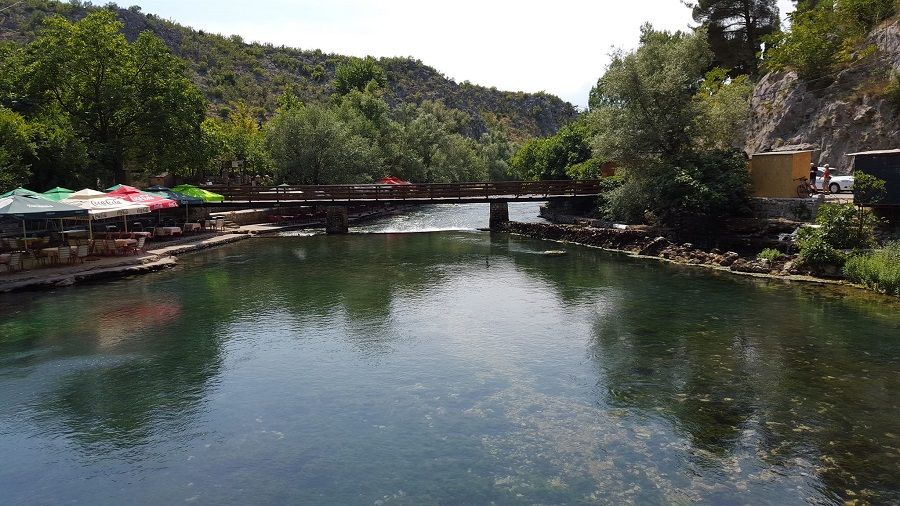
There is one other crossing to mention, just outside Dubrovnik on the way to the airport at Ivanica – you will see the turning to Gornji Brgat. This will take you to the town of Trebinje in half an hour, and it is also useful to know for those travelling to Montenegro when the border queues are long, which they can be during peak season. There is another crossing from BiH to Montenegro not far from Trebinje, which is not busy at all, and is worth the diversion in peak season, BUT they did not (at time of last visit) sell the green card for Montenegro so you will have to organise that in advance.
Driving: Rental car
Driving from Dubrovnik to Bosnia and Herzegovina is relatively straightforward and quick, given the density of the traffic and delays at the border (particularly at Neum) during the summer months, it may take longer. When renting a vehicle from Dubrovnik, make sure to find out if you can legally take the vehicle into Bosnia and Herzegovina, most of the time this is no issue at all but it is always better to be sure as some companies are not always comfortable with the idea. There are several trustworthy rent-a-car companies in Dubrovnik and I have included a link to SixT, one of the most popular ones in the city who reportedly has no issue with border crossings: https://www.sixt.hr/php/reservation/home?language=hr_HR (this website will automatically load in Croatian, please select English language if needed).
Transfer
Perhaps the most straightforward way to get from Dubrovnik to Bosnia and Herzegovina is to arrange a transfer from Dubrovnik Airport (Cilipi). You can click here to find out more about one goes about arranging transfers prior to, or upon your actual arrival in Dubrovnik
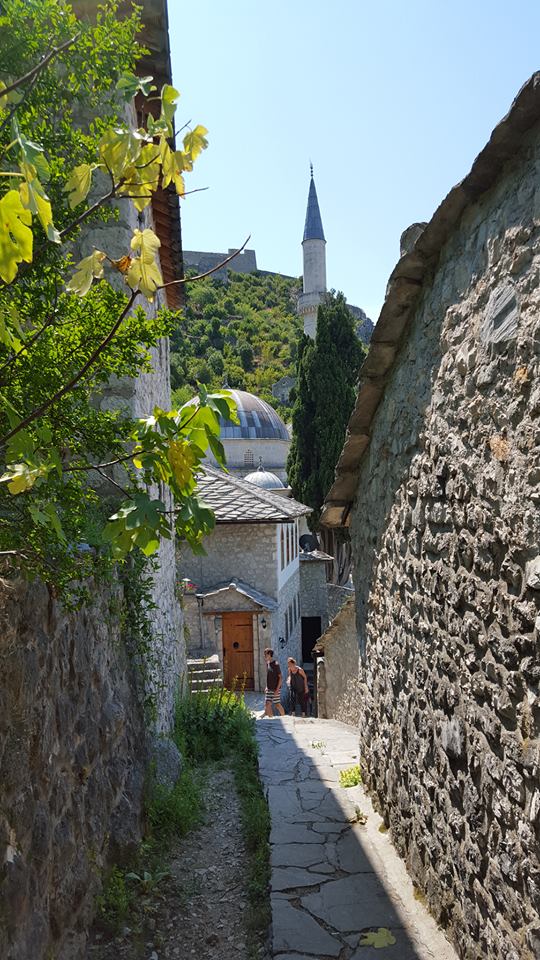
Croatia Airlines
Depending on how long your stay in Dubrovnik will be, you can book a fairly priced return journey with Croatia Airlines from Dubrovnik Airport via the Croatian capital of Zagreb to the city of Sarajevo, Bosnia and Herzegovina. Please visit www.croatiaairlines.com or www.dubrovnik-airport.hr to find out more.
Things to consider:
Bosnia and Herzegovina has its own currency, the Bosnian Convertible Mark (Code: BAM) but it frequently uses the Euro. The Croatian kuna may be accepted in some places, including the coastal town of Neum and in a handful of petrol stations, but it is not worth the risk. The safer thing to do is to obtain the correct currency before or just after entering the country.
Bosnia and Herzegovina is not a member of the European Union or the European Economic Area.
If you are driving, make sure you have a valid drivers license with you at all times, as well as GREEN CARD INSURANCE, if you are unsure what this, you can ask and find out more about it at the agency in Dubrovnik you decide to rent a vehicle from.
There is a lot of police control on speeding, especially just after the border crossing. If you are travelling by car, make sure to exercise caution and stick to the speed limit.
The border crossing is uncomplicated and 9 times out of 10 you will simply be waved through. Visas are not required to be granted entry into or passage through Bosnia and Herzegovina for European (EU/EEA/EFTA) Russian, American, Canadian or Australian citizens, but a valid passport must be carried at all times. You can find out if you require a visa before entry with a quick Google search. (Please keep in mind: Russian citizens DO require a visa to enter the Republic of Croatia and this is likely to be checked by the authorities at the border crossing. The United Kingdom of Great Britain and Northern Ireland will remain a full member of the European Union for the foreseeable future and travel regulations for British citizens are highly unlikely to change at all either during or after that period. The presentation of a valid British passport is enough to be granted entry).
Dubrovnik is a hub of life and as mentioned previously, it is second to none when it comes to accessing its close neighbours. With so many reputable and longstanding Dubrovnik based agencies like Elite Travel, Adriatic Global Net, Vivado, Gulliver Travel (just to name a few!) willing to give you a fantastic deal on excursions of all types to Bosnia and Herzegovina, what do you have to lose?




